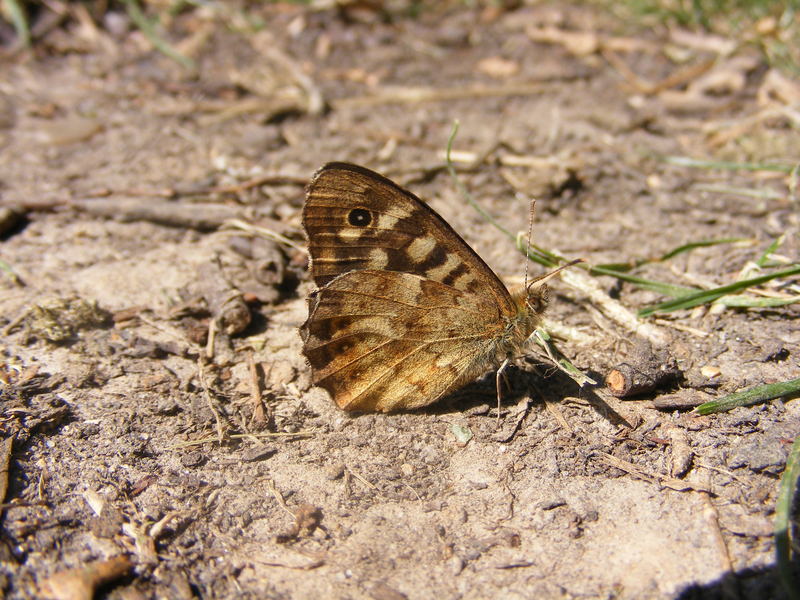Speckled wood butterfly
Pararge aegeria
This brown woodland butterfly does not feed from flowers but can instead be seen feeding on the honeydew secreted by aphids.
Statistics
Wingspan: 50mm.
Physical description
Speckled wood butterflies have brown wings with creamy-yellow spots and a small dark eye spot near the tip of the upper wing. The lower wings have a row of dark brown eye spots.
Distribution
They are widespread throughout Europe.
Habitat
This species inhabits woodlands and hedgerows.
Diet
Adults feed on aphid honeydew, a sticky sugary substance secreted by aphids as they feed on plant juices. Caterpillars feed on various grasses.
Behaviour
Some male butterflies claim particular areas and defend them from rival butterflies. Speckled woods choose areas where the sunlight breaks through the trees. They patrol the patch and investigate every insect in the neighbourhood. They are on the look out for females to mate with or male intruders who they attack and chase away. You might see them spiralling up into the tree-tops, clashing wings with each other in battle. The butterfly that claimed the territory first usually wins.
Conservation status
Speckled wood butterflies are common throughout Britain but are becoming more localised in the north. They are not listed as endangered on IUCN Red List 2000. |

